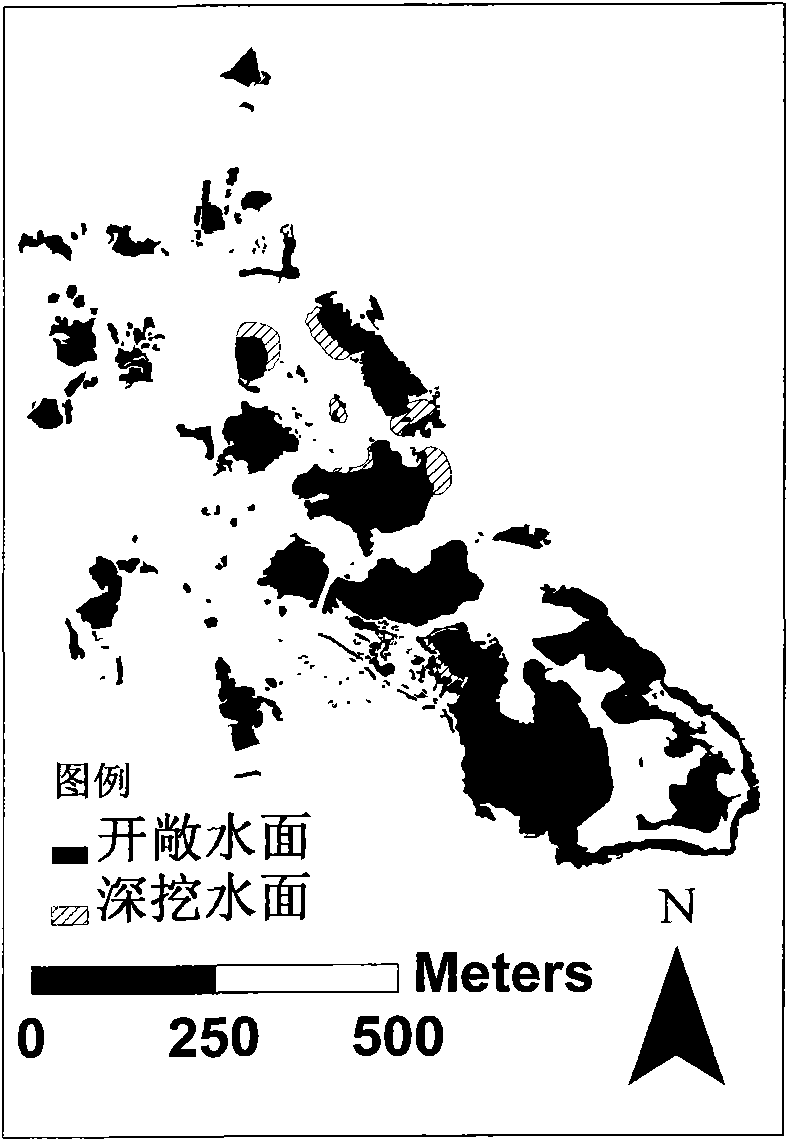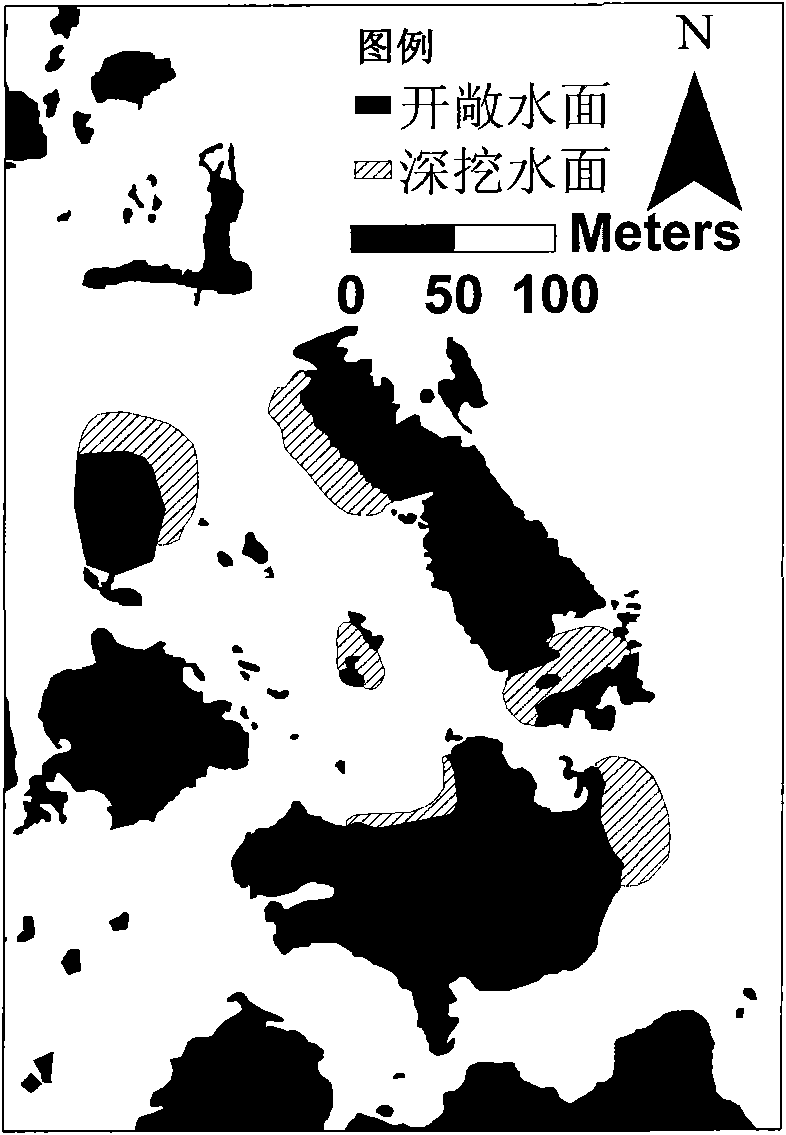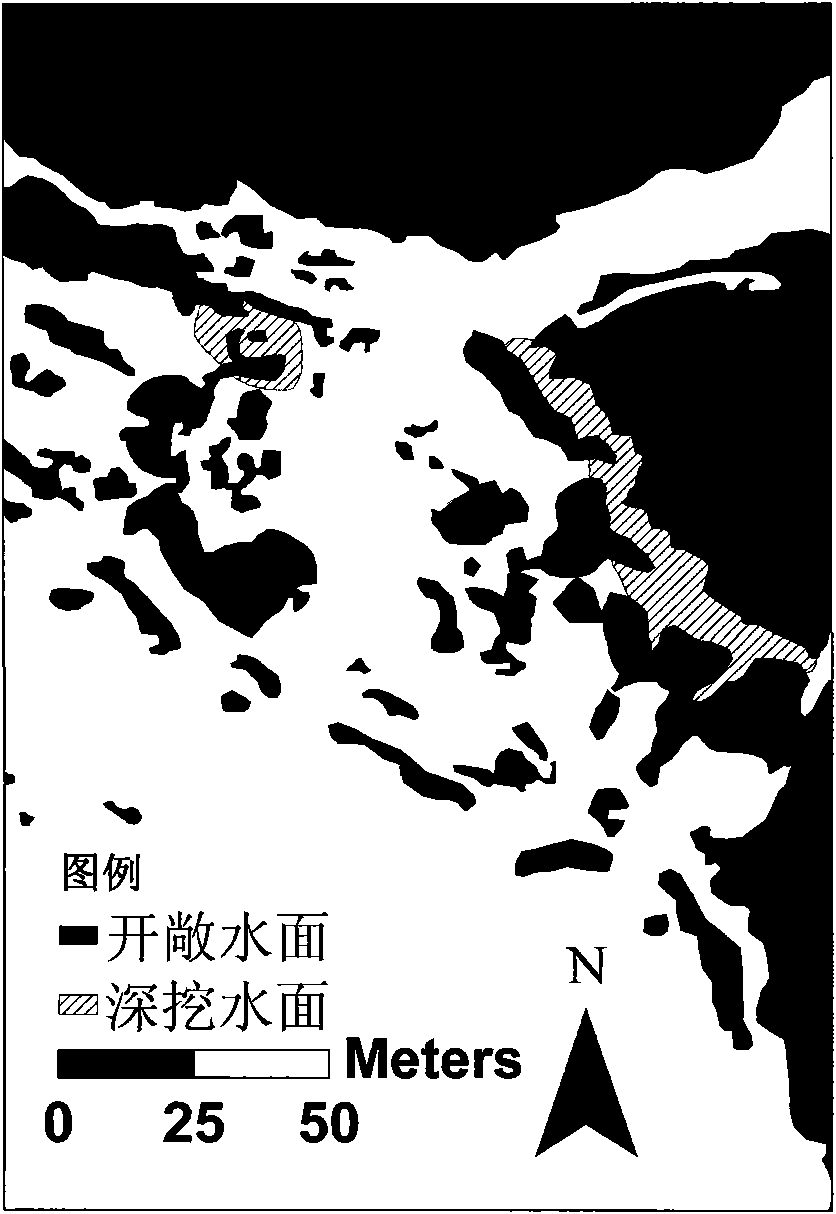Method for restoring slash type degraded wetland
A restoration method and wetland technology, applied in excavation, climate change adaptation, water conservancy projects, etc., can solve problems such as late start of work, scattered technology, lack of pertinence, etc., and achieve the effect of improving self-sustainability and stability.
- Summary
- Abstract
- Description
- Claims
- Application Information
AI Technical Summary
Problems solved by technology
Method used
Image
Examples
Embodiment 1
[0032] Figure 1-1-Figure 1-3 , Figure 2-1-Figure 2-3 and Figure 3-1-Figure 3-3 A method of hydrological communication that can be used to illustrate examples of the present invention.
[0033] The hydrological connectivity method is mainly applied to degraded wetlands where hydrological conditions have been destroyed. The method of hydrological connectivity is to adjust the shape, scale and spatial layout of water bodies through engineering measures, stabilize the water area, optimize the distribution pattern of water resources in the wetland restoration area, re-establish good horizontal and vertical connections between water bodies, and improve the ecological environment of wetlands , to ensure the normal input and output of nutrients in the wetland ecosystem, and to regulate the water conditions of the wetland biome.
[0034] Such as Figure 1-1-Figure 1-3 , Figure 2-1-Figure 2-3 and Figure 3-1-Figure 3-3 As shown, the method of hydrological communication mainly ...
Embodiment 2
[0036] The micro-terrain transformation method is mainly used in the transformation of the topography of degraded wetlands to create a suitable environment for the survival of wetland organisms. Through engineering measures, reduce the landform that is too steep or too high, level the local terrain (suitable for birds, etc.), create habitat islands, and regularize the shape of small water surfaces, so as to improve and create the living environment of wetland vegetation and water birds, and increase the diversity of wetland habitats. quality and stability.
[0037] The methods of micro-topography transformation mainly include: 1) Construction of shoal wetlands, that is, local leveling of the open areas near the undulating water surface, leveling the overly high terrain, and creating an open environment suitable for wetland vegetation growth and waterfowl habitat; 2) Regular and small Water surface, that is, by regularizing the shape of the small water surface that bends, remov...
Embodiment 3
[0040] The matrix restoration method is mainly applied to the restoration of degraded wetlands with poor soil or lack of loamy soil. Backfill loam in nutrient-poor areas through engineering measures, enhance the ability of wetland substrates to store water and nutrients, improve the transfer of nutrients in wetland ecosystems, provide breeding grounds for soil organisms, provide good nutritional conditions for vegetation, and provide birds. provide habitat for animals.
[0041] The matrix restoration methods mainly include: 1) backfilling in layers, that is, in an open area with poor soil, backfill 10-20 cm of soil (loamy soil) that meets the growth requirements of wetland vegetation in layers, and restore the wetland matrix; 2) backfilling of planting pits, that is, Within the recovery area, excavate planting pits of different specifications to backfill loamy soil, among which the diameter of the large pit x pit depth is 100×80 cm; the diameter of the middle pit x pit depth i...
PUM
 Login to View More
Login to View More Abstract
Description
Claims
Application Information
 Login to View More
Login to View More - R&D
- Intellectual Property
- Life Sciences
- Materials
- Tech Scout
- Unparalleled Data Quality
- Higher Quality Content
- 60% Fewer Hallucinations
Browse by: Latest US Patents, China's latest patents, Technical Efficacy Thesaurus, Application Domain, Technology Topic, Popular Technical Reports.
© 2025 PatSnap. All rights reserved.Legal|Privacy policy|Modern Slavery Act Transparency Statement|Sitemap|About US| Contact US: help@patsnap.com



